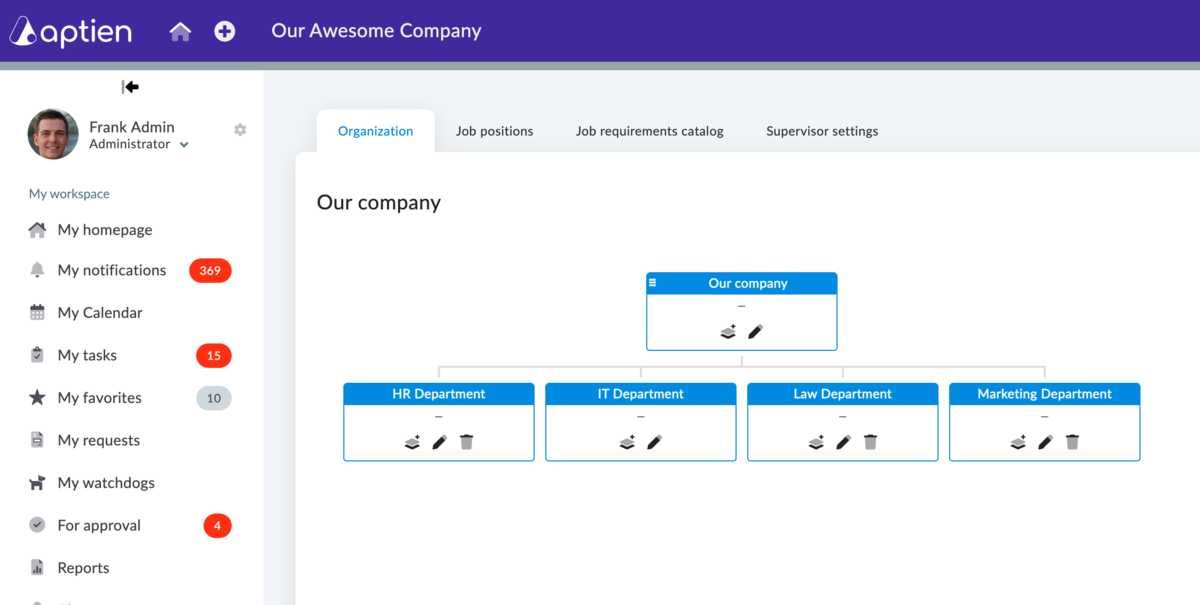Organizational structure is a formal, hierarchical arrangement of people in organization that defines how activities, responsibilities, authority, and communication are organized and coordinated within an organization. It determines how roles, power, and information flow between different levels and units of the organization to achieve its goals efficiently.
What Are Key Points of Organizational Structure?
- It is a formal, hierarchical arrangement that defines the relationships between individual jobs and organizational units within a company or other parts of an organization.
- It outlines the relationships between superiors and subordinates, specifying competencies, duties, and responsibilities.
- It defines and illustrates how organizational units are connected and managed.
- Each unit typically has its own manager who oversees the work of its members.
Key Characteristics of Organizational Structure
- Hierarchy: Defines reporting relationships (who reports to whom).
- Division of Labor: Specifies how tasks and responsibilities are divided among employees and departments.
- Coordination: Establishes communication channels and workflows to align efforts across the organization.
What Are Basic Types of Organizational Structures in SMBs?
Traditional Functional Structure
- Groups employees based on specific functions or roles (e.g., HR, Finance, Marketing, IT).
- Advantages: Specialization improves efficiency and expertise. Clear accountability within departments.
- Disadvantages: Limited collaboration between departments. Potential for silos.
- Example: A company with separate HR, Sales, and Production departments.
Product - oriented Structure:
- Description: Divides the organization into semi-autonomous units based on products, services, markets, or geography.
- Advantages: Focused attention on specific markets or products. Easier to adapt to regional or market-specific needs.
- Disadvantages: Duplication of resources across divisions. Potential competition between divisions.
- Example: A multinational company with divisions for North America, Europe, and Asia-Pacific.
Matrix Structure
- Description: Combines functional and or project / product oriented (temporary) structures, with employees reporting to both a functional manager and a project or product manager.
- Advantages: Encourages collaboration and resource sharing across departments. Flexibility in responding to changing needs or priorities.
- Disadvantages: Potential for conflicts in authority.
- Example: A tech company where engineers report to both the engineering head and the project manager for a specific product.
Process or Service Oriented Network Structure:
- Description: Relies on outsourcing and partnerships, with a central organization coordinating a network of independent entities.
- Advantages: High flexibility and adaptability. Access to external expertise.
- Disadvantages: Dependency on external partners. Complex coordination.
- Example: A company outsourcing manufacturing while focusing on design and marketing.
Choosing the Right Structure
The best structure depends on:
- Company size: Smaller businesses may prefer flat or functional structures, while larger ones often use divisional or matrix setups.
- Industry: Highly innovative industries might favor matrix or flat structures, while traditional sectors might prefer hierarchical models.
- Business Goals: Adaptability, efficiency, or market focus can guide the choice.
How Aptien Can Help You Manage Your Organizational Structure?
Formal Organizational Chart
- Set up your organizational structure in the “Organization settings”
Team Management and Workflow Setup
- Define teams and their hierarchy.
- Team Management and Approval: Assign specific user superiors in Aptien for effective team management and approval processes.
- Learn how to set up a supervisor here.

